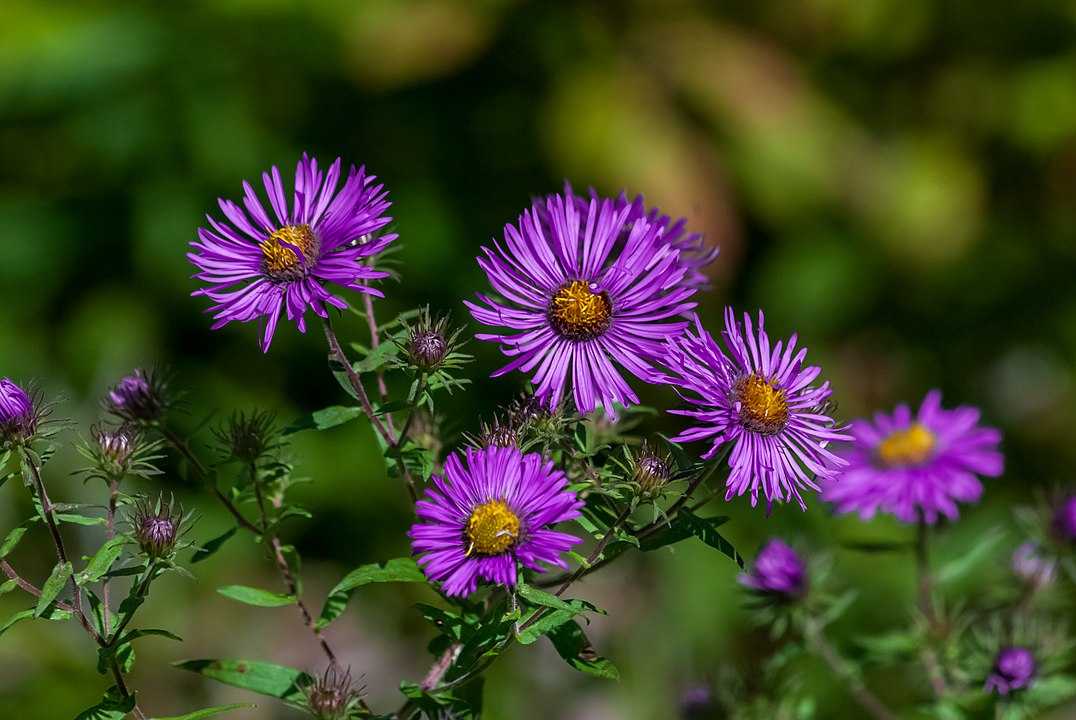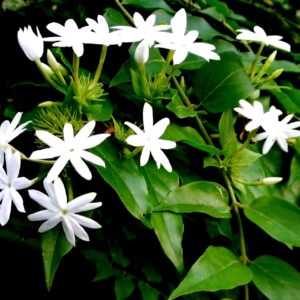Introduction
Purple fleabane, also known as Sahadevi or Kesavardhini, is a flowering plant that is native to India and Southeast Asia. It is scientifically known as Centratherum punctatum, belongs to the Asteraceae family.
Purple fleabane is commonly found in fields, roadsides, and waste areas. It can be an annual or perennial herb and grows up to 60-80 cm tall. The leaves of the plant are small, narrow, and serrated.
Click on the headings to read more!
Flower
- Purple Fleabane produces small, daisy-like flowers that are typically purple, although they may also be pink or white.
- The flowers are arranged in clusters at the ends of the plant’s branches and bloom throughout the summer months.
- Each flower head is composed of both ray flowers and disc flowers, with the ray flowers being purple or pink and the disc flowers being yellow.
- The flowers are attractive to bees, butterflies, and other pollinators, making it a valuable addition to any garden.
- Purple Fleabane flowers can also be cut and used in floral arrangements due to their delicate appearance and vibrant color.
Benefits
Purple fleabane, or Sahadevi, has several benefits. Here are some of them:
Medicinal uses:
The plant has several medicinal properties and has been used in Ayurvedic and traditional medicine to treat various ailments. The plant extract has been used as a natural remedy for respiratory disorders, fever, cough, and cold.
Anti-inflammatory properties:
The plant contains several compounds that have anti-inflammatory properties. These compounds help reduce inflammation and pain in the body.
Digestive aid:
The plant has been used as a digestive aid and helps improve digestion. It stimulates the secretion of digestive enzymes and improves gut health.
Anti-fungal and anti-bacterial properties:
The plant contains several compounds that have anti-fungal and anti-bacterial properties. These properties help in preventing and treating fungal and bacterial infections.
Ornamental uses:
Purple Fleabane is a beautiful flowering plant that adds color and beauty to any garden. Its vibrant purple flowers and lush foliage make it an attractive option for borders, rock gardens, and mixed beds.
For a stunning garden, consider pairing your Purple Fleabane plant with a Yellow Lantana flower plant or a Jackfruit plant. The Yellow Lantana flower plant has vibrant yellow flowers that will contrast beautifully with the Purple Fleabane’s purple blooms. The Jackfruit plant is a tropical fruit tree that has large, glossy leaves that will provide a bold and lush backdrop for the Purple Fleabane.
Attracts pollinators:
The flowers of Purple Fleabane attract bees, butterflies, and other pollinators, making it a valuable addition to any garden.
Vastu Guidelines
As per Vastu, planting Purple Fleabane in the right direction and location can attract positive energy flow into your home and surroundings. Here are some guidelines to follow:
Direction:
According to Vastu, the northeast corner of your garden or balcony is the most suitable direction for planting Purple Fleabane. This direction is associated with positive energy flow and is said to bring good luck and prosperity.
Placement:
Avoid planting Purple Fleabane in the south direction as it is believed to bring negative energy. Instead, plant it in the east, north, or northeast direction for positive energy flow.
Plant care
Purple Fleabane (Sahadevi) is a low maintenance plant that is easy to care for. Proper care will ensure that the plant remains healthy and produces a profusion of blooms. Here are some tips on how to care for Purple Fleabane:
Soil:
Purple Fleabane prefers well-draining soil that is rich in organic matter. The ideal soil condition is moist but not waterlogged, avoiding excessive water accumulation. A pH range of 6 to 7 is ideal for this plant.
Light:
It prefers full sun to partial shade. It requires at least 6 hours of direct sunlight per day for optimal growth and blooming.
Water:
Purple Fleabane needs regular watering, especially during the hot summer months. Water the plant deeply once or twice a week, depending on the weather conditions and the moisture level of the soil.
Fertilizer:
This plant does not require heavy fertilization. Use a balanced, all-purpose fertilizer once a month during the growing season to encourage healthy growth and blooming.
Pruning:
Prune back the stems of the plant after it has finished blooming to promote new growth and prevent the plant from becoming leggy.
Pests and Diseases:
It is generally pest and disease resistant. However, it can be susceptible to aphids and spider mites. To manage these pests, you can make use of insecticidal soap or neem oil.
Propagation:
Purple Fleabane can be propagated by stem cuttings or by division. Take stem cuttings in the spring or early summer and root them in moist potting soil. In either spring or fall, separate the plant into smaller sections and then replant these divisions into soil that drains well.



